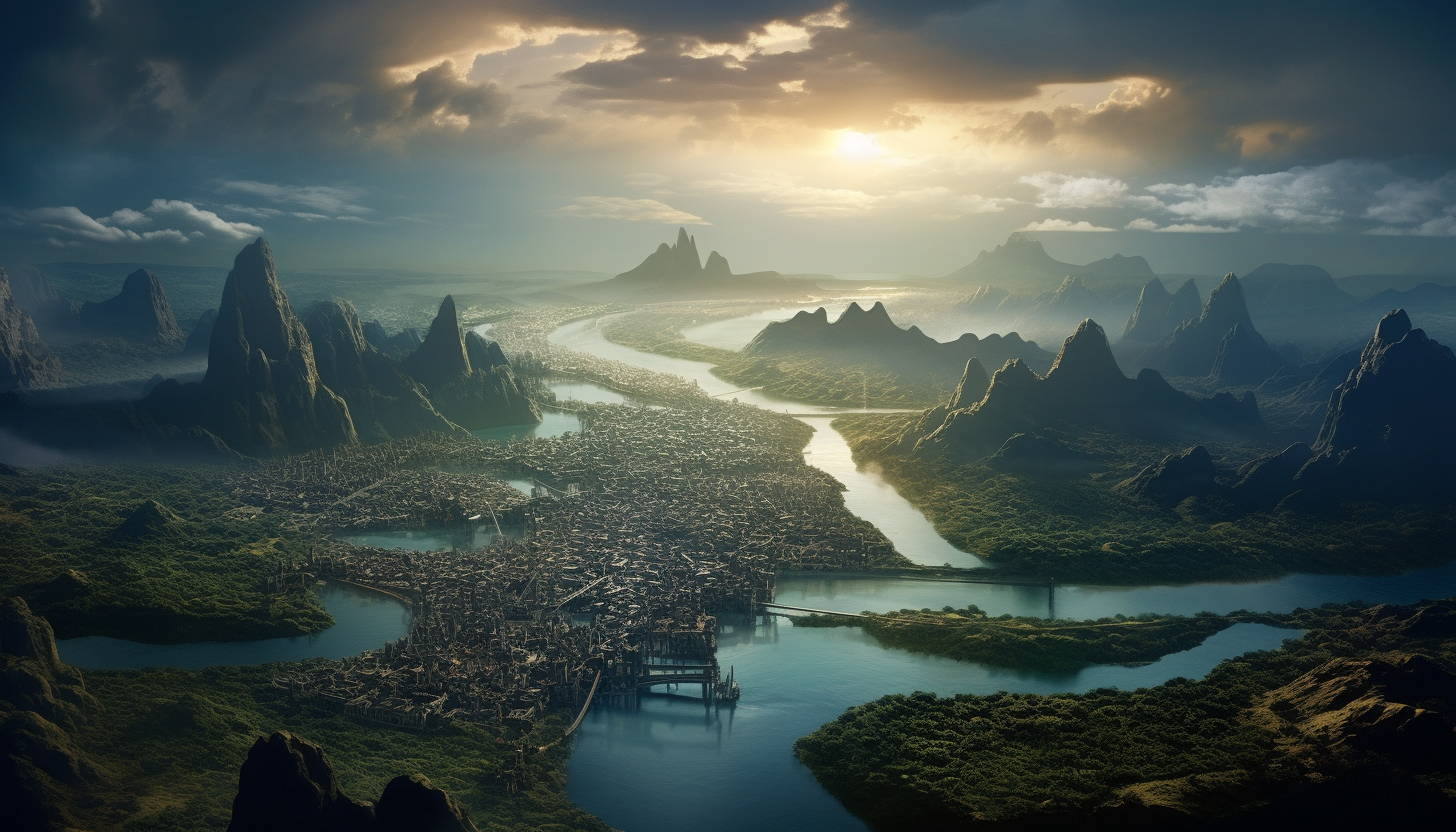Craving expansive cityscapes?
Defining the largest cities on Earth is an adventure through different terrains, cultures, and national definitions. From the frozen expanses of Greenland to the bustling urban centers of the United States and China, this journey opens up new perspectives on what we consider to be a “city.”
Venture into these vast terrains with us!
What Defines a City?
What constitutes a “city” varies greatly around the world. In some places, a city might be a densely populated urban center; in others, it could be a vast area of sparsely populated land. Understanding this concept leads to some surprising discoveries about the largest cities in the world by area.
The Unconventional Giants: Greenland’s Massive Cities
Surprisingly, the two largest cities in the world are located in Greenland.
Sermersooq, Greenland – Spanning over 531,900 square kilometers (205,400 square miles), Sermersooq’s sheer size is jaw-dropping. However, with only 23,123 inhabitants, its population density is a mere 0.043 persons per square kilometer.
Avannaata, Greenland – Close in size to Sermersooq, Avannaata occupies 522,700 square kilometers (201,816 square miles) and houses 10,726 inhabitants. Here, the population density is even lower, at 0.02 persons per square kilometer.
China’s Dominance
China, with its unique administrative structure, claims the next four spots on the list of the largest cities by area:
Nagqu – A city filled with 89 townships, 25 towns, and 1,283 villages, covering 450,537 square kilometers (173,953 square miles).
Hulunbuir – An extraordinary grassy plateau, encompassing 263,953 square kilometers (101,913 square miles) with 2.549 million inhabitants.
Jiuquan – More densely populated, with 1.095 million people spread across 191,342 square kilometers (73,878 square miles).
Shigatse – Home to over 703,000 people in an area of 182,000 square kilometers (70,721 square miles), Shigatse is a blend of traditional culture and expansive landscapes.
Uncommonly Large Cities Around the World
In places like Australia, the largest city by area, Kalgoorlie-Boulder, has a city council and mayor but only around 30,000 inhabitants. Similarly, Altamira in Brazil, Yakutat in the U.S., and others share the characteristic of being expansive in size but modest in population.
The Ten Largest Cities by Area: A Closer Look
New York, NY-NJ-CT, United States – The champion of area with 12,093 km2 (4,669 mi2), and a bustling population of 20,870,000.
Boston-Providence, MA-NH-RI-CT-ME, United States – A close second, covering 9,538 km2 (3,683 mi2).
Tokyo-Yokohama, Japan – The third-largest and the most populous urban area globally with 8,230 km2 (3,178 mi2) and almost 38 million inhabitants.
Atlanta, GA, United States – Known for its rich history and vibrant arts scene, Atlanta spans 7,400 km2 (2,857 mi2), blending southern charm with urban sophistication.
Chicago, IL-IN-WI, United States – Covering 7,006 km2 (2,705 mi2), Chicago, the Windy City, is famed for its bold architecture and lively cultural scene.
Los Angeles, CA, United States – The sprawling city of Los Angeles, spreading over 6,351 km2 (2,452 mi2), is a world-renowned hub for entertainment, fashion, and innovation.
Moscow, Russia – The seventh-largest city at 4,662 km2 (2,274 mi2), Moscow stands as a symbol of Russia’s vast landscape.
Washington-Baltimore, DC-VA-MD, United States – The nation’s capital along with the nearby city of Baltimore encompasses 5,500 km2 (2,124 mi2), representing both the historical roots and political heartbeat of the country.
Philadelphia, PA-NJ-DE-MD, United States – With a rich Revolutionary War history, Philadelphia spans 5,430 km2 (2,096 mi2), offering a mix of heritage, culture, and modernity.
Dallas-Fort Worth, TX, United States – The Dallas-Fort Worth metroplex, covering 5,279 km2 (2,038 mi2), is a dynamic area, thriving with business opportunities, arts, and Texan hospitality.
Conclusion
The exploration of the largest cities in the world by area takes us through a tapestry of unique definitions, landscapes, and human settlements. From Greenland’s sparse ice-covered expanses to New York’s dense urban sprawl, these cities challenge our traditional notions and remind us of the fascinating diversity of our world.
By recognizing that what may be called a “city” in one part of the world can be something entirely different in another, we come to appreciate the beautiful complexity of human habitation. Whether densely populated like Tokyo or nearly uninhabited like Sermersooq, these cities symbolize the astonishing variety and adaptability of human life on Earth.
If you’re into ranking cities and finding the ideal one for you to relocate to, make sure to check out our powerful tool: The Nomad Index.

Leave a Reply